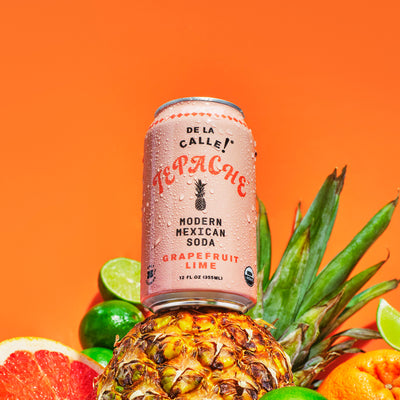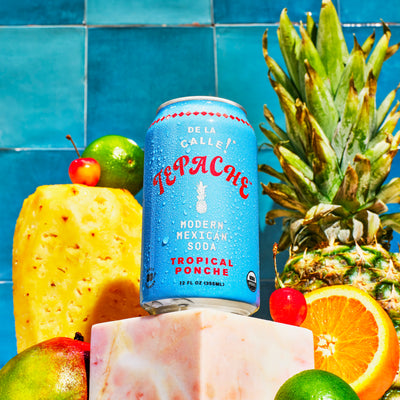5 Mexican Spices You Need in Your Kitchen

If you’ve ever had Mexican food, then you know it never disappoints on the flavor front. Aa arguably one of the most robust, flavorful cuisines in the world, it might seem impossible to recreate the flavors of Mexico at home. Luckily, the task is easier than it seems as long as you have the right spices. In this article, we’ll cover five Mexican spices you need in your kitchen to make your favorite dishes and drinks.
The Importance of Spices
Given that the basic ingredients of Mexican dishes are relatively simple foods like beans, rice, and tortillas, it’s really the spices in Mexican cuisine that transform these ingredients into flavorful, delicious meals. Traditional Mexican spices are reminiscent of natural elements, bringing heat and smoky flavors, along with cool, fresh ones to create a perfect culinary balance. As one of the most diverse countries in the world, Mexican cuisine and spices have roots both in pre-Columbian cooking traditions and in European cooking traditions.
Spices vs. Herbs
Before we dive into the five Mexican spice you need to know about, let’s answer an important question: what’s the difference between a spice and a herb? Spices are aromatic substances, usually powders, that come from the roots, bark, or seeds of a plant. Essentially, spices are any part of the plant that are not the leaves. Oftentimes, you find spices in the pantry section of the grocery store in small glass bottles.
Herbs, on the other hand, are the leaves of the plant. Unlike spices, it’s common to find herbs either in the pantry section of the grocery store or in the vegetable section, where they are sold fresh.
Chili Powder
The first Mexican spice that you need if you want to start making Mexican dishes at home is chili powder. If you look closely at chili powder, you might notice that although it looks like a uniform red powder, chili powder is actually made up of a blend of several different types of chilis. In order to make chili powder, chilis are first dried and then ground. Sometimes, other spices such as cumin and Mexican oregano are also added to chili powder.
It’s common in Mexico to use chili powder as a condiment on top of different fruits and vegetables such as mango or elote, a delicious, corn-on-the-cob style snack sold on the streets of Mexico.
Given that chilis are such an essential part of Mexican cuisine, it’s important to pay close attention to the type of chilis a recipe calls for. Usually, to make savory dishes, whole dry chilies are used. Although chili powder can work as a substitute, it’s best to try and use whole dry chilis when you can.
It is also important to pay attention to the type of powder a recipe calls for. Sometimes recipes will call for chipotle chili powder, a type of chili powder with a distinct, smoky flavor. Even though the name implies that chipotle chili powder is made from chipotle chilis, it’s actually made from dried, smoked jalapeños. Chipotle chili powder goes well in sauces, salsas, and marinades like adobo.
Another traditional type of chili powder often used in Mexican cooking is ancho chili powder. This variation has a sweet, rich flavor and has notes of dried fruits. Given that this variety of chili powder is on the sweeter side, it is often used to make Mexican hot chocolate.
Mexican Oregano
Although technically an herb, Mexican oregano is most often used in its dried form and functions as a spice in many recipes. For this reason, it earned the second spot on our list of 5 Mexican spices you’ve got to have in your kitchen.
Mexican oregano, as you might’ve guessed, comes from a plant that is native to Mexico, Central America, and the American southwest. Given that it’s drought-tolerant, this plant thrives in the dry, desert climates of these regions. Mexican oregano is known for its earthy flavor and citrus and licorice notes. For this reason, it’s sometimes used in Mexico as part of the spice mix for herbal tea.
Mexican oregano is also used to add flavor to beans, soups, and stews. It pairs nicely with paprika, cumin, chili peppers, and tomato-based dishes. Usually, Mexican oregano is added to dishes to give them a flavor that is both earthy and fresh. To get the most flavor out of your Mexican oregano, roll the spice in your hands before you add it to your dish in order to release the flavor kept in the dried leaves.
If you’ve had both lemon verbena and Mexican oregano and thought you noticed some similarities, your taste buds are telling the truth. Lemon verbena and Mexican oregano come from the same family, so they have similar flavors.
What Makes Mexican Oregano Different?
If you buy oregano in the store, it’s very likely that you’ll be buying Mediterranean oregano, not Mexican oregano. Mediterranean oregano, also known as regular oregano, has minty undertones and is usually added to meat and pasta sauces.
Although, in a pinch, you can use these spices somewhat interchangeably, remember that they add very different flavors to food. If you’re looking for a replacement for Mexican oregano, a better substitute than regular oregano is marjoram, also known as Mexican marjoram or Mexican wild sage. If you’re using marjoram as a substitute for Mexican oregano and miss the subtle citrus flavors it offers, you can add a pinch of coriander to your dish.
Cumin
Although cumin has its origins in the Eastern Mediterranean and South Asia, it quickly made its way across the world as trade routes emerged because the plant can grow easily everywhere. Cumin has an earthy, pungent, hearty flavor with a subtle citrus flavor. It has a bitter and toasty taste that is hard to find a substitute for.
Made from the seed of a flowering plant (and therefore a true spice!), cumin is often used in sauces and stews in Mexican cuisine. That being said, cumin is more popular in Tex-Mex cuisine than it is in authentic Mexican cuisine.
Garlic
Beloved all over the world but especially in Mexico is garlic. You can buy garlic in fresh, jarred, or powdered form. Regardless of how you buy it, make sure you have garlic in some form on hand when you want to try making a Mexican dish. Oftentimes, garlic is used when making salsa and taco seasoning. Garlic pairs well with onion powder and chili powder.
Cinnamon
Believe it or not, cinnamon is actually made from the inner bark of evergreen trees. These trees are native to Sri Lanka, but the spice made its way to Mexico with the Spanish conquistadores. As with oregano, there’s a variety of cinnamon specific to Mexico. This cinnamon in Mexico is always Ceylon cinnamon, whereas Cassia cinnamon is often used in the United States and Canada. Cinnamon has a strong, woodsy flavor and Mexican cinnamon specifically has somewhat floral notes.
Also different from the US, cinnamon in Mexico is used in both sweet and savory dishes, from sweet potato to mole. It’s also a crucial ingredient in tepache, a traditional Mexican beverage made from fermented pineapple and flavored with sugar, cinnamon, and various other fruits and spices.
Conclusion
If you want to start making traditional Mexican foods or beverages at home, you need to have the following spices: chili powder, Mexican oregano, cumin, garlic, and cinnamon. Although there are substitutes for some of these spices, their flavors are so distinct and integral to Mexican cooking that it really helps to have them on hand. Once you do, you can start making all the delicious Mexican recipes that you know and love!
Sources:
Chili Peppers 101: Nutrition Facts and Health Effects | Healthline











